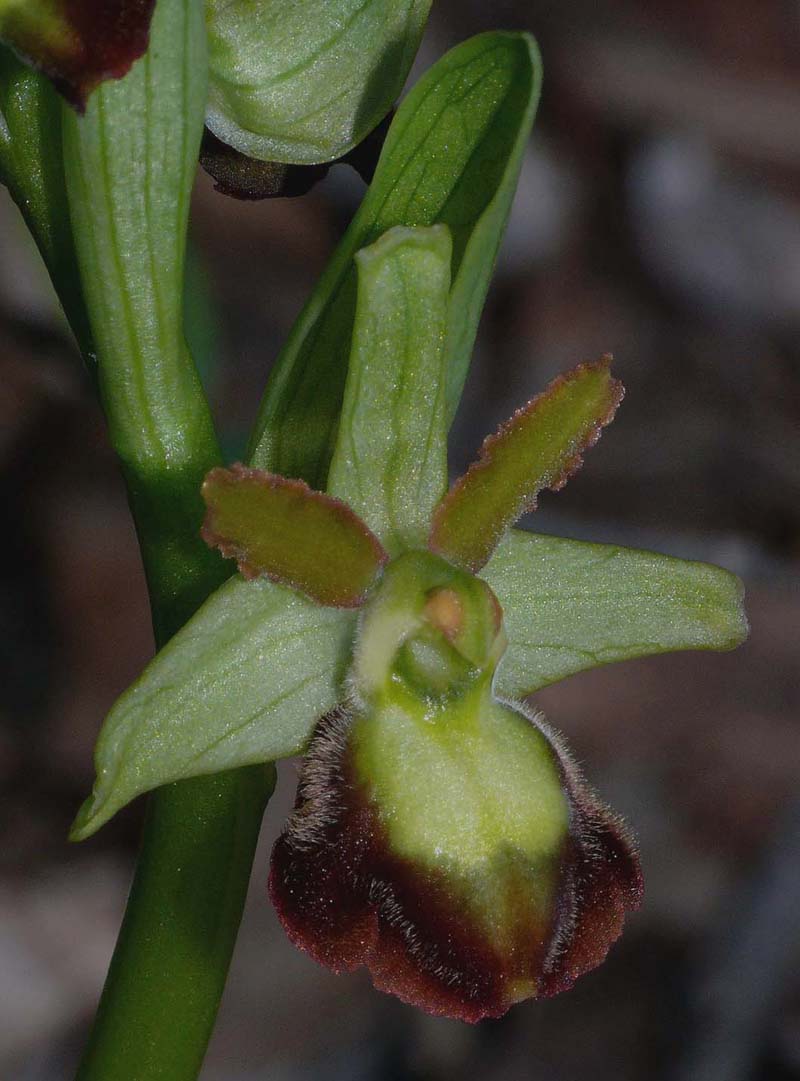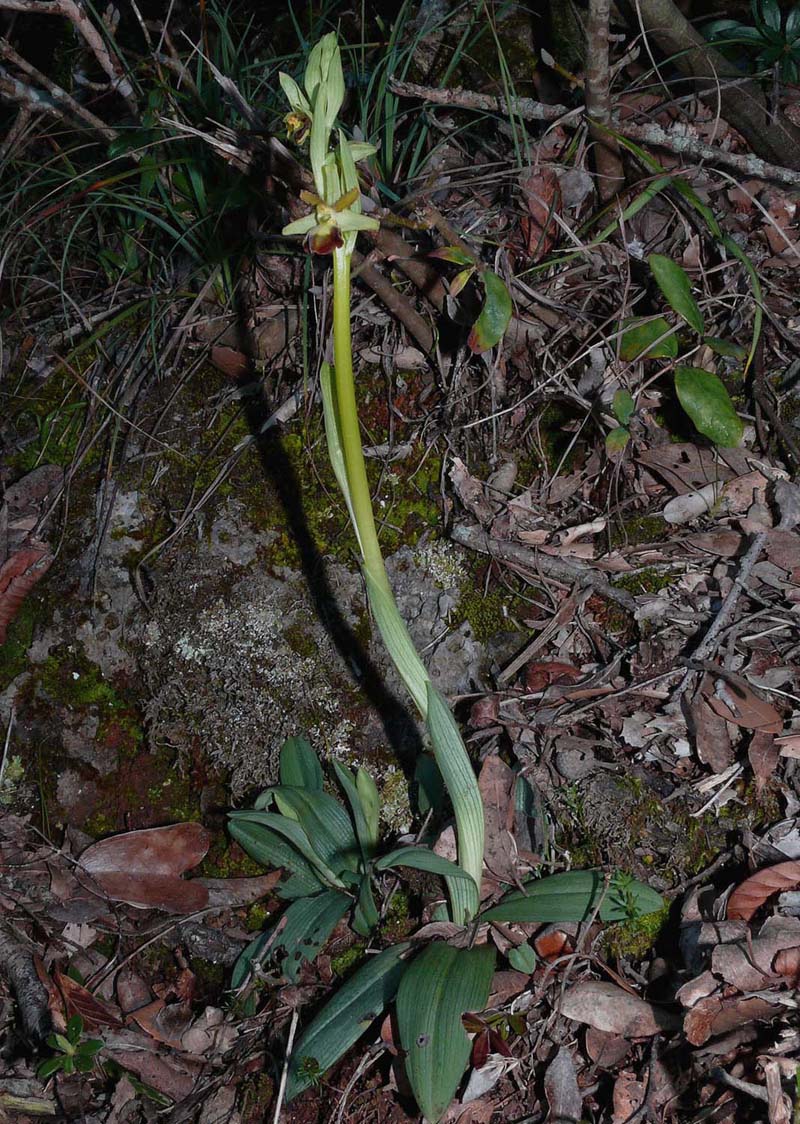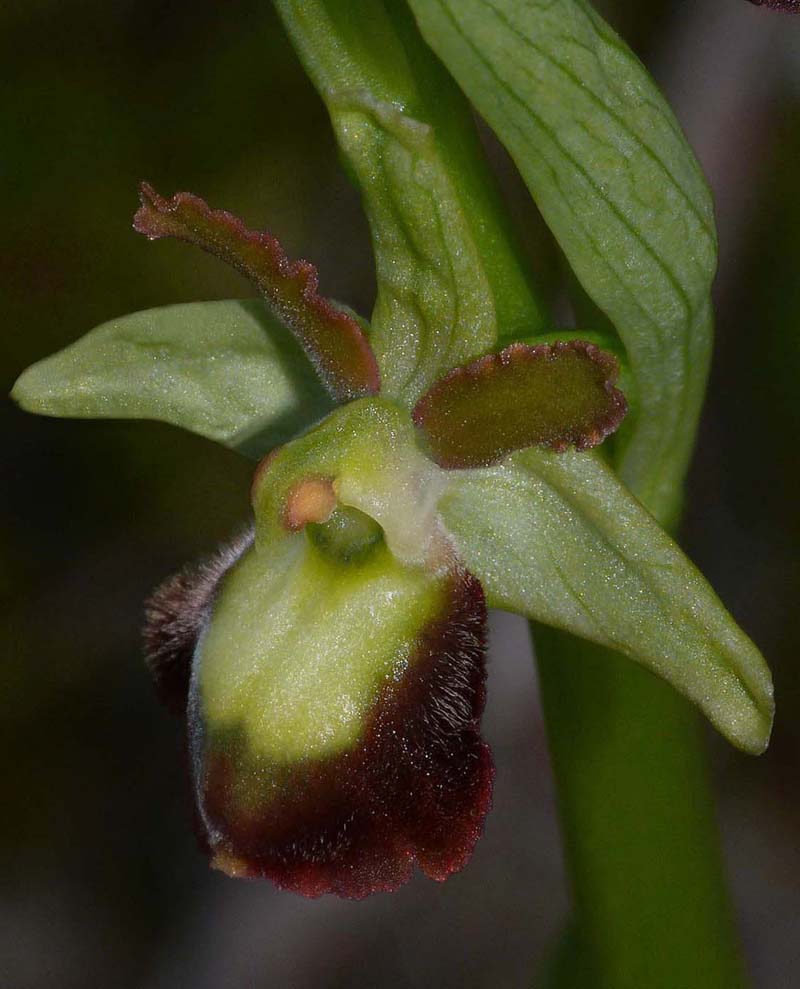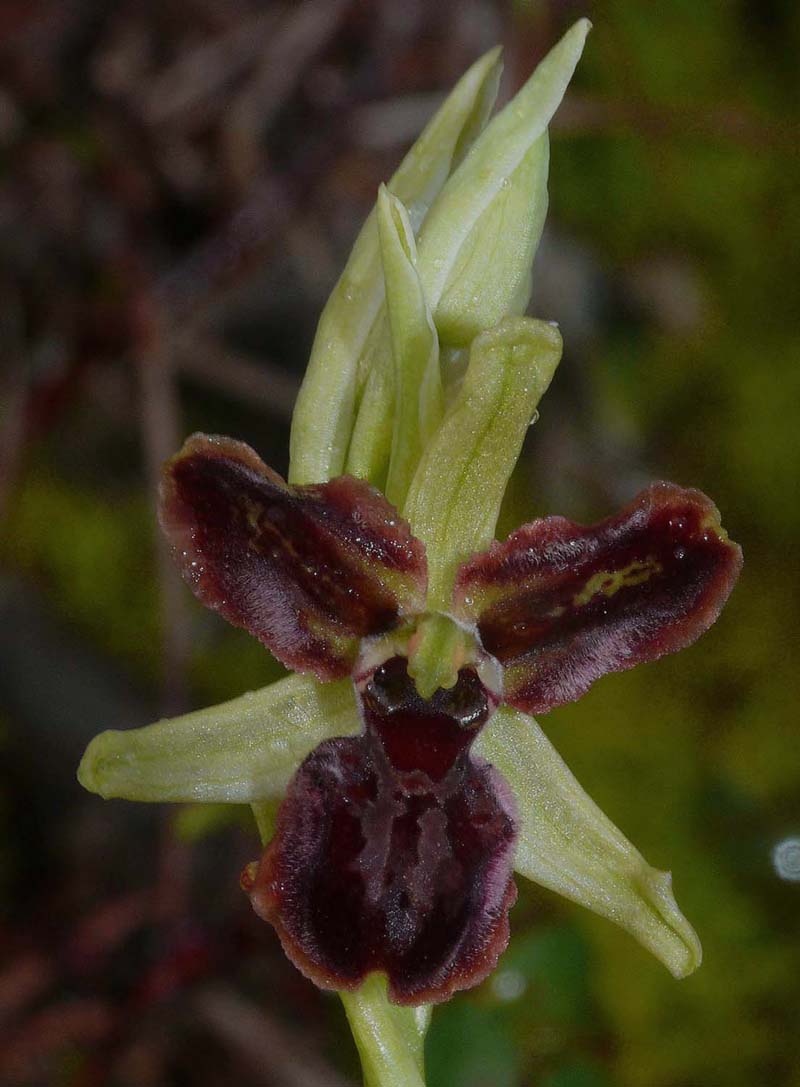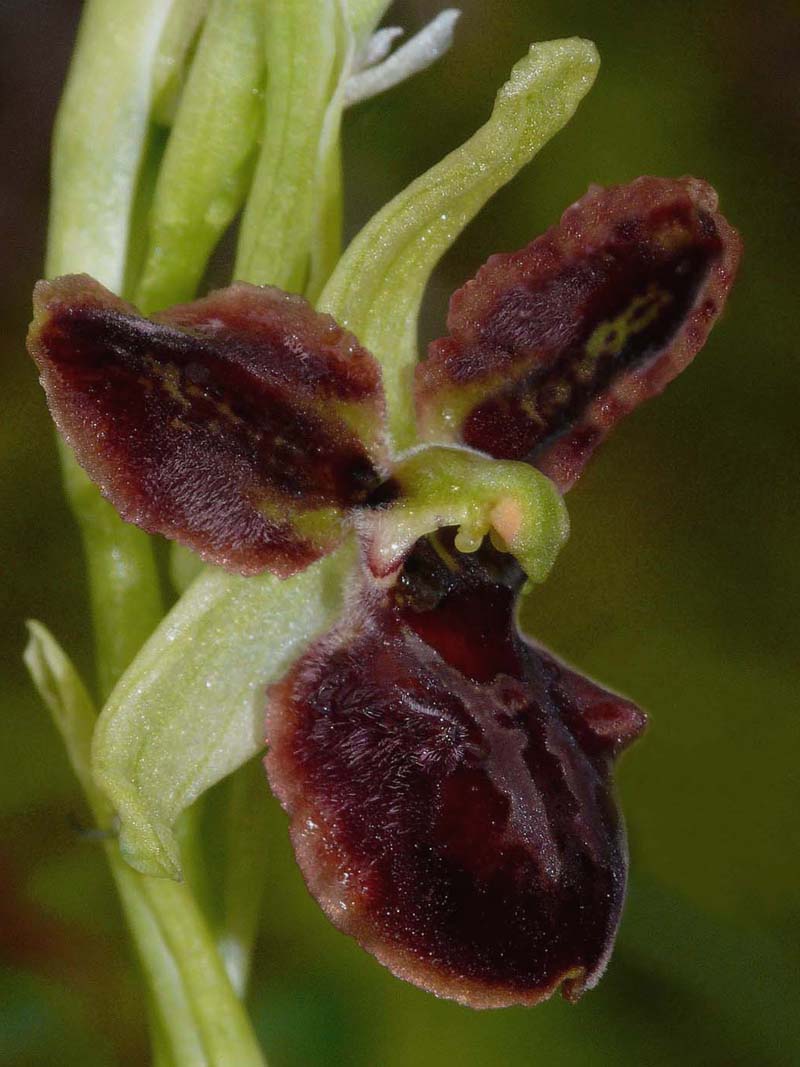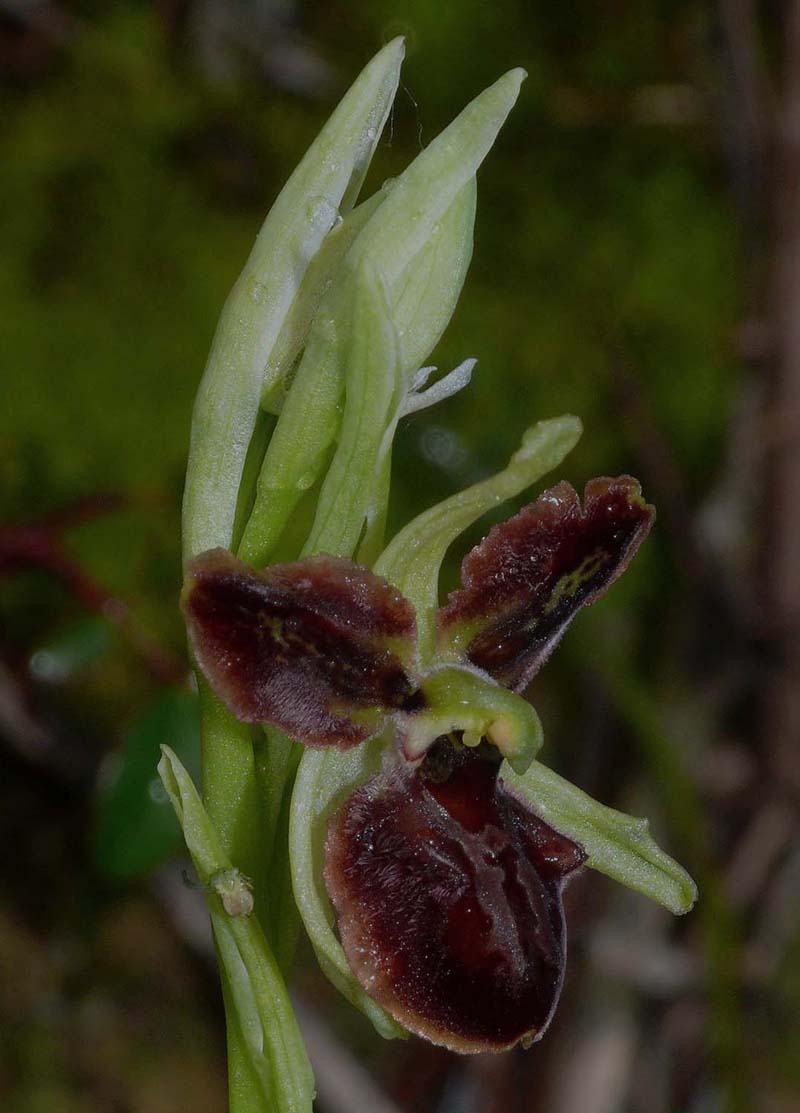O. tarquinia
was first described by Delforge from Livorno, Tuscany in
2000 and is a member of the twelve strong O. exaltata group. Its name refers to the Tarquins, Etruscan Kings of Rome
between 759 and 503 BC (the first of these being
Romulus).
This Ophrys is an Italian endemic with a very limited range centred on Tuscany and at its most frequent away from the coast in the Firenze region. It is however relatively common as far south as Grosetto and it's in this area that its range overlaps with several other closely related species. This assembly of morphologically similar Ophrys frequently causes difficulty with identification and despite the individual taxons having distinct distinguishing features, years of introgression has created intermediate populations which defy diagnosis. There are in fact three other species with which it may be found in flower concurrently, O. argentaria, O. classica and the ubiquitous O. sphegodes.
Perhaps the the most striking and obvious feature that differentiates O. tarquinia is its large size and sturdy appearance. Less reliably the following characteristics can also be indicative ;- 1. The speculum pattern is often complex and elaborate. 2. Basal swellings are normally small or absent. 3. The lip can be entire or three lobed, margins more or less recurved and normally with wavy edges. 4. The basal rosette is distinctly bluish grey and the stem tall and thick-set. 5. Petals are often deeply coloured orange/brown, with wavy, crisped edges. The pictures all come from sites in southern Tuscany between Sienna and Grosetto, dating from the end of March and throughout April.
This Ophrys is an Italian endemic with a very limited range centred on Tuscany and at its most frequent away from the coast in the Firenze region. It is however relatively common as far south as Grosetto and it's in this area that its range overlaps with several other closely related species. This assembly of morphologically similar Ophrys frequently causes difficulty with identification and despite the individual taxons having distinct distinguishing features, years of introgression has created intermediate populations which defy diagnosis. There are in fact three other species with which it may be found in flower concurrently, O. argentaria, O. classica and the ubiquitous O. sphegodes.
Perhaps the the most striking and obvious feature that differentiates O. tarquinia is its large size and sturdy appearance. Less reliably the following characteristics can also be indicative ;- 1. The speculum pattern is often complex and elaborate. 2. Basal swellings are normally small or absent. 3. The lip can be entire or three lobed, margins more or less recurved and normally with wavy edges. 4. The basal rosette is distinctly bluish grey and the stem tall and thick-set. 5. Petals are often deeply coloured orange/brown, with wavy, crisped edges. The pictures all come from sites in southern Tuscany between Sienna and Grosetto, dating from the end of March and throughout April.

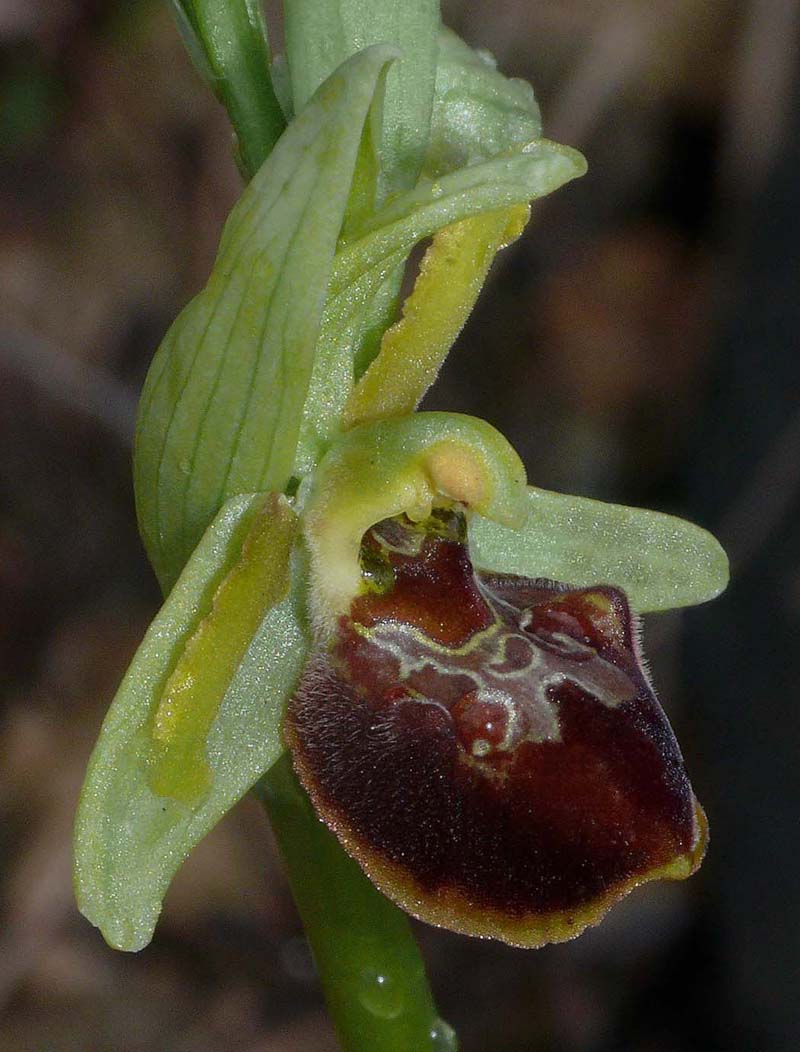
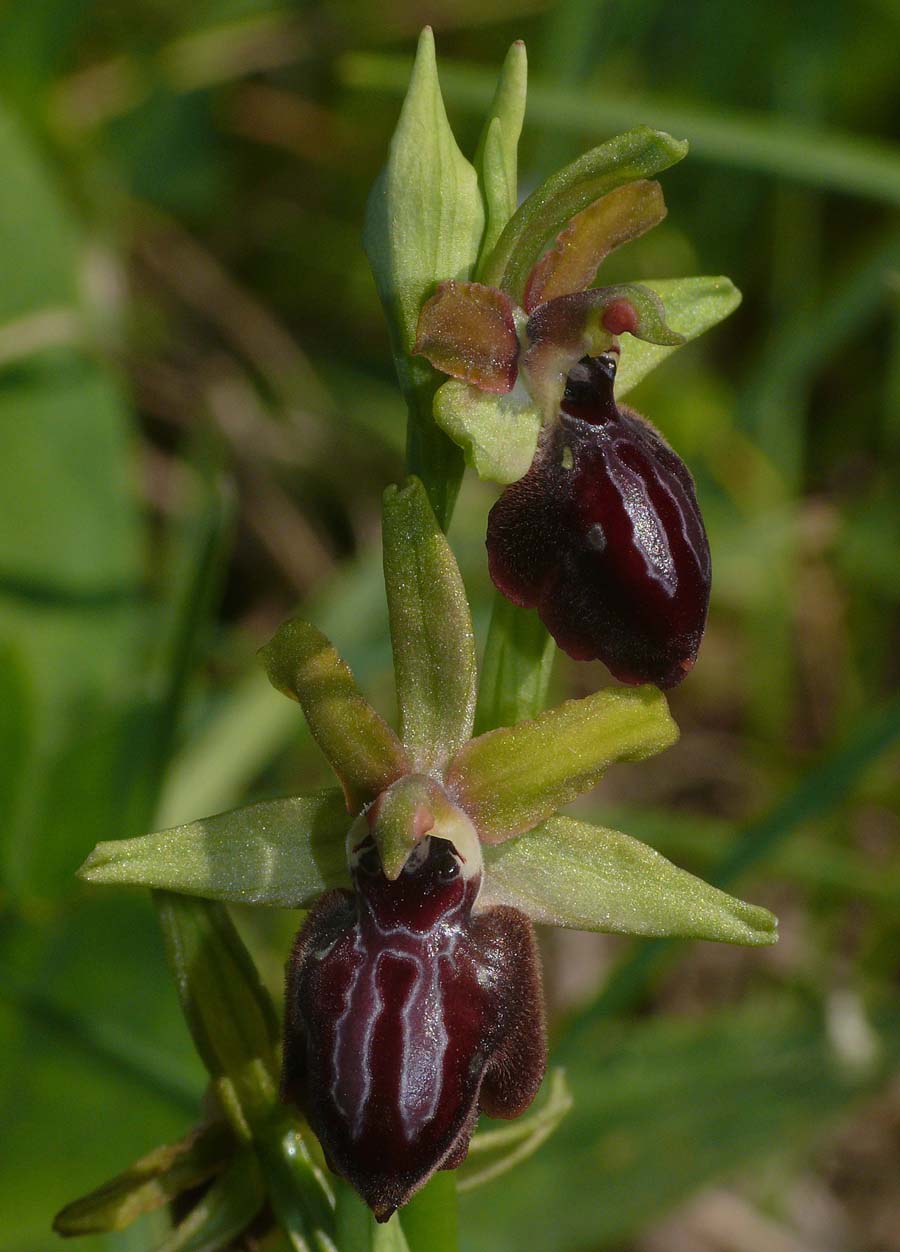
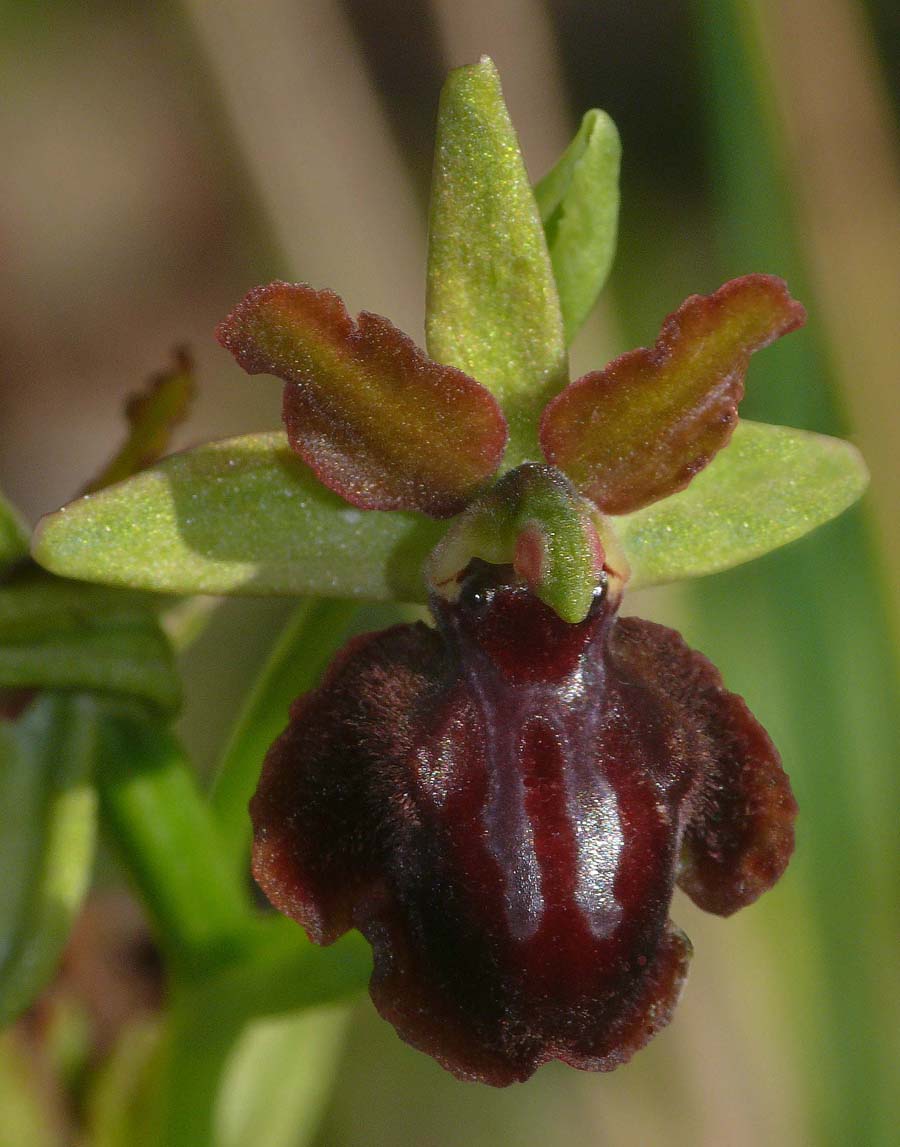
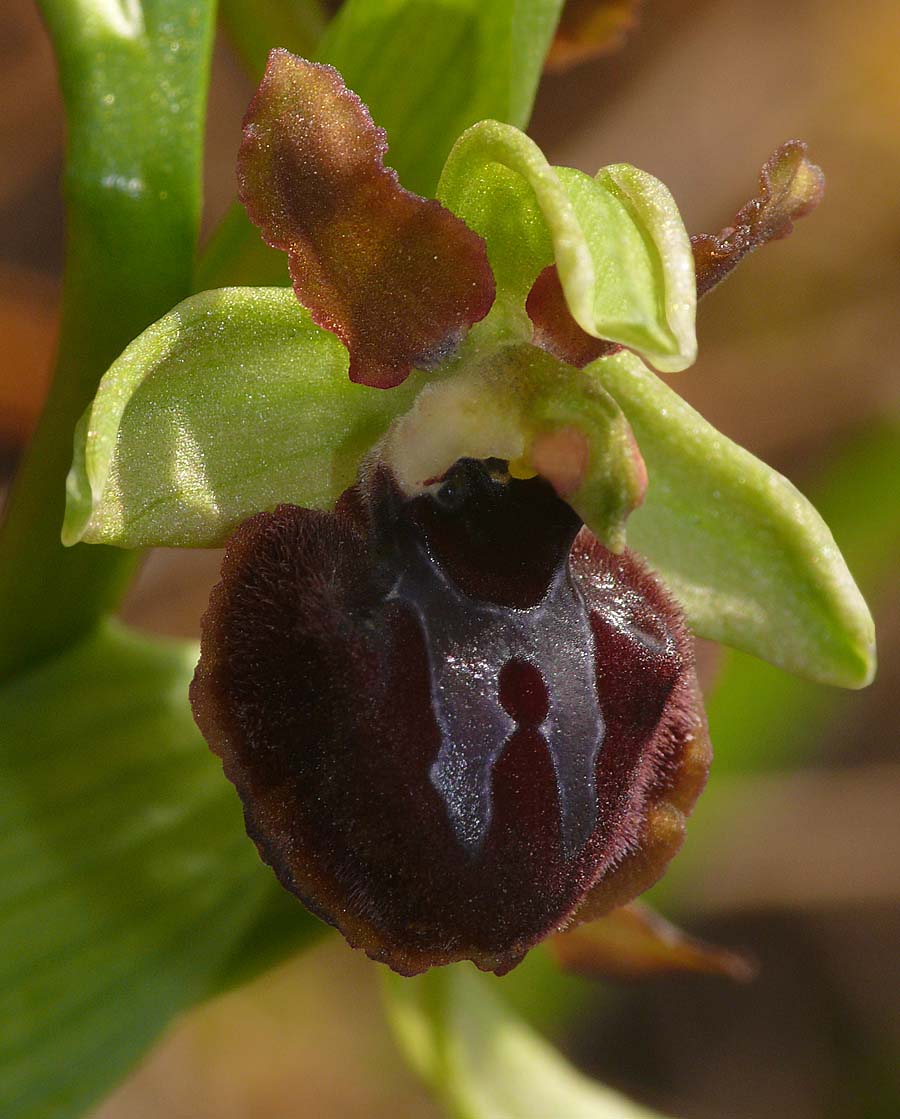
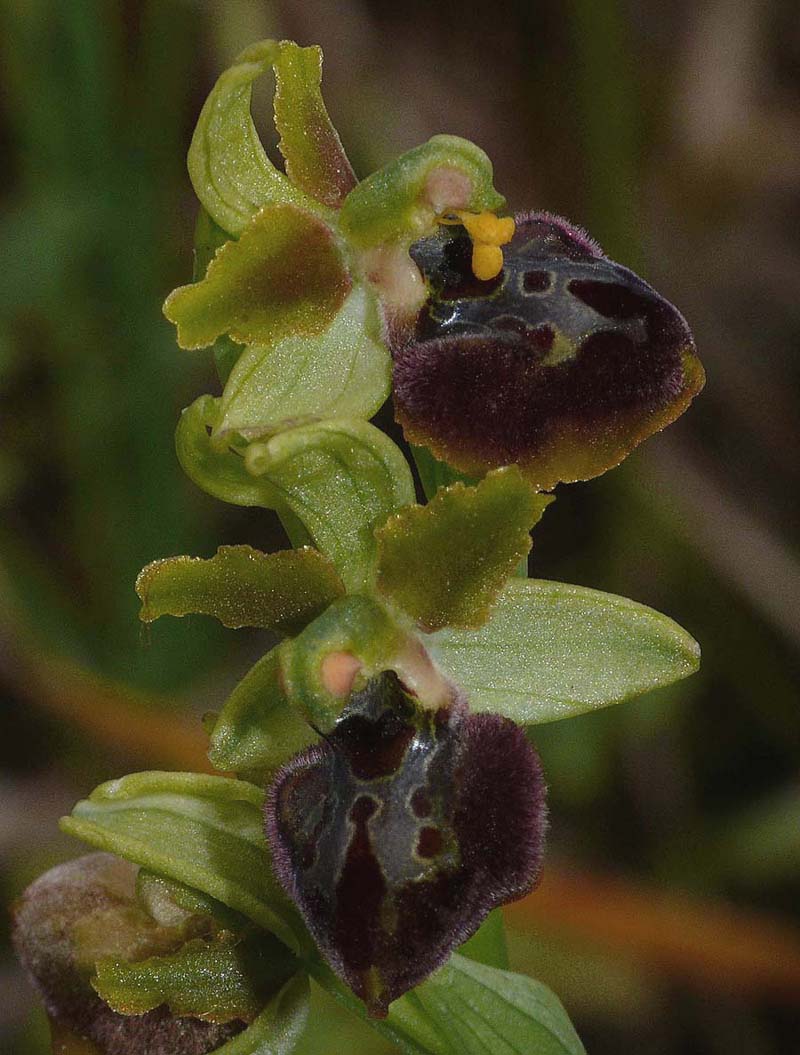
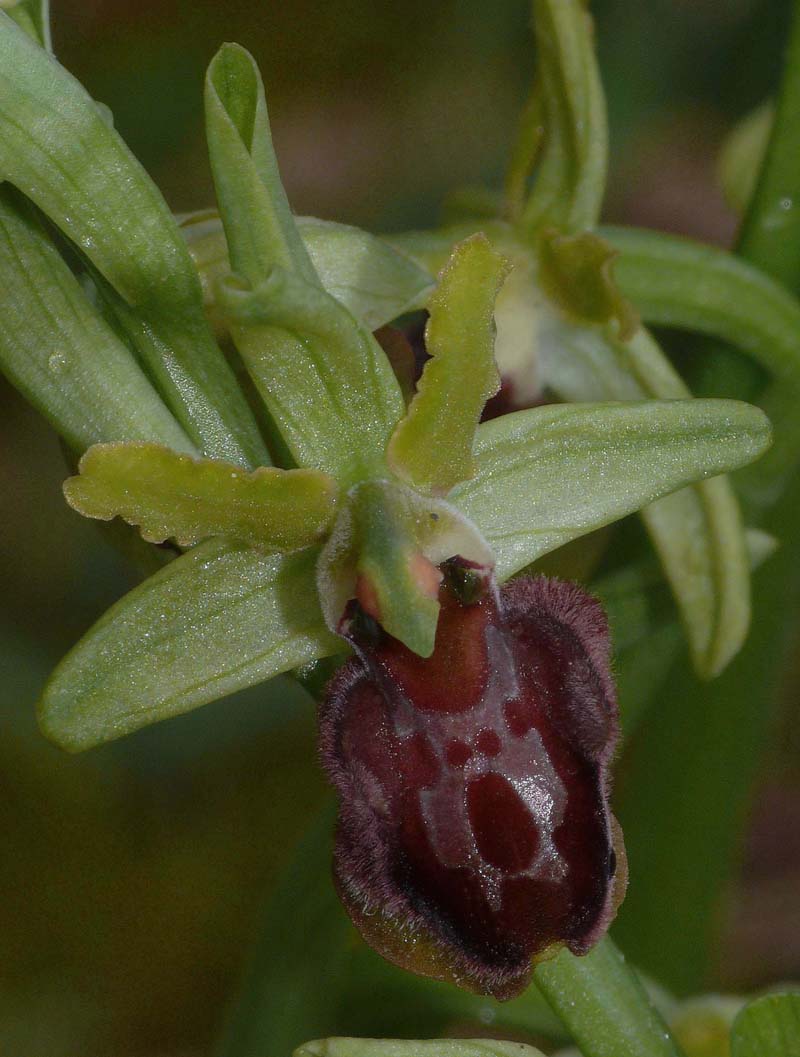
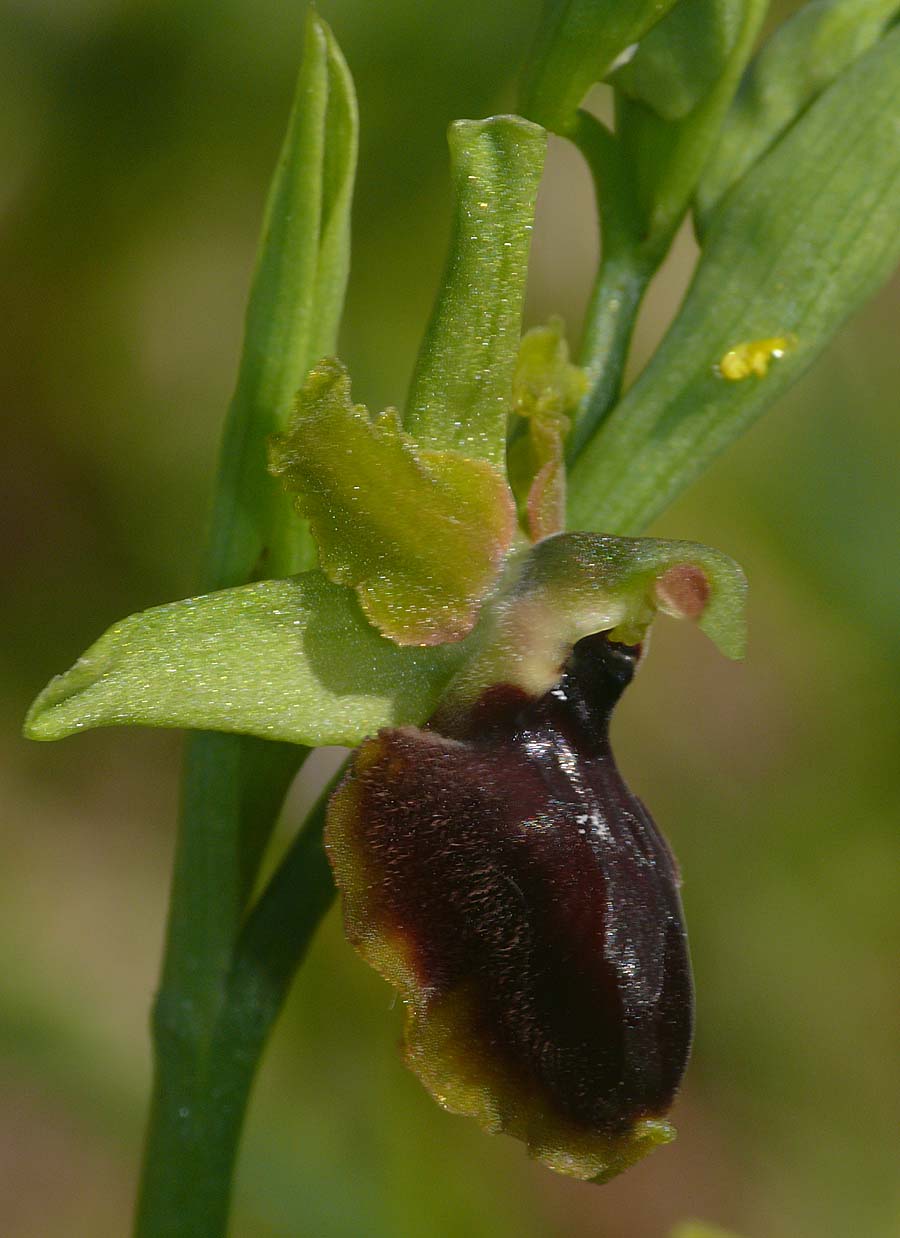
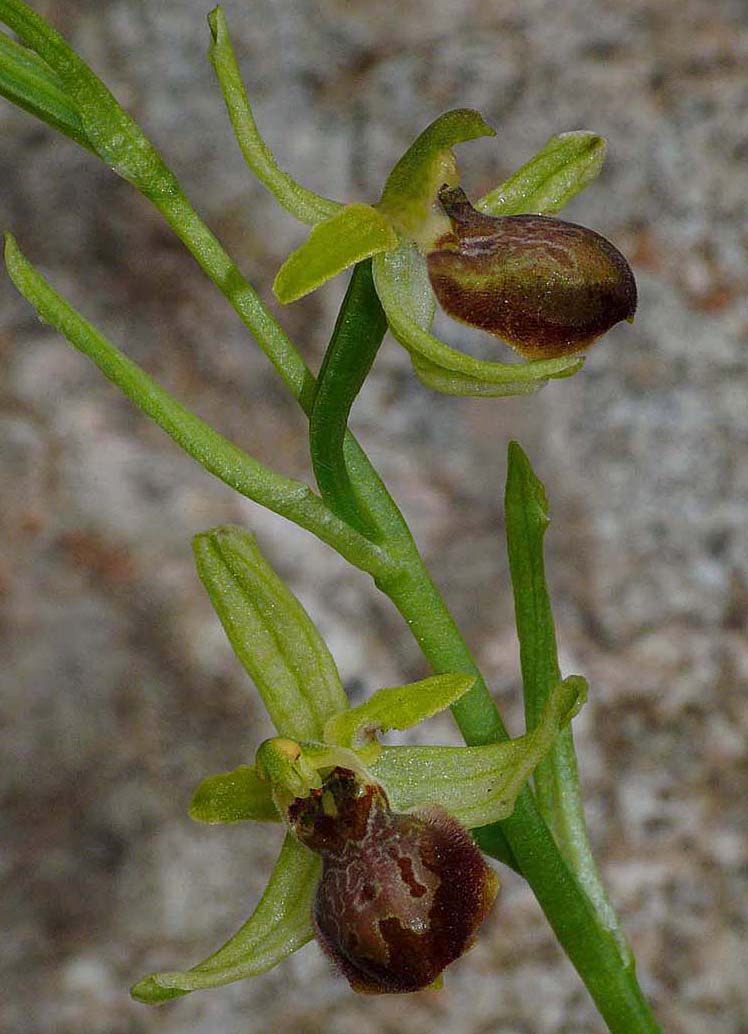

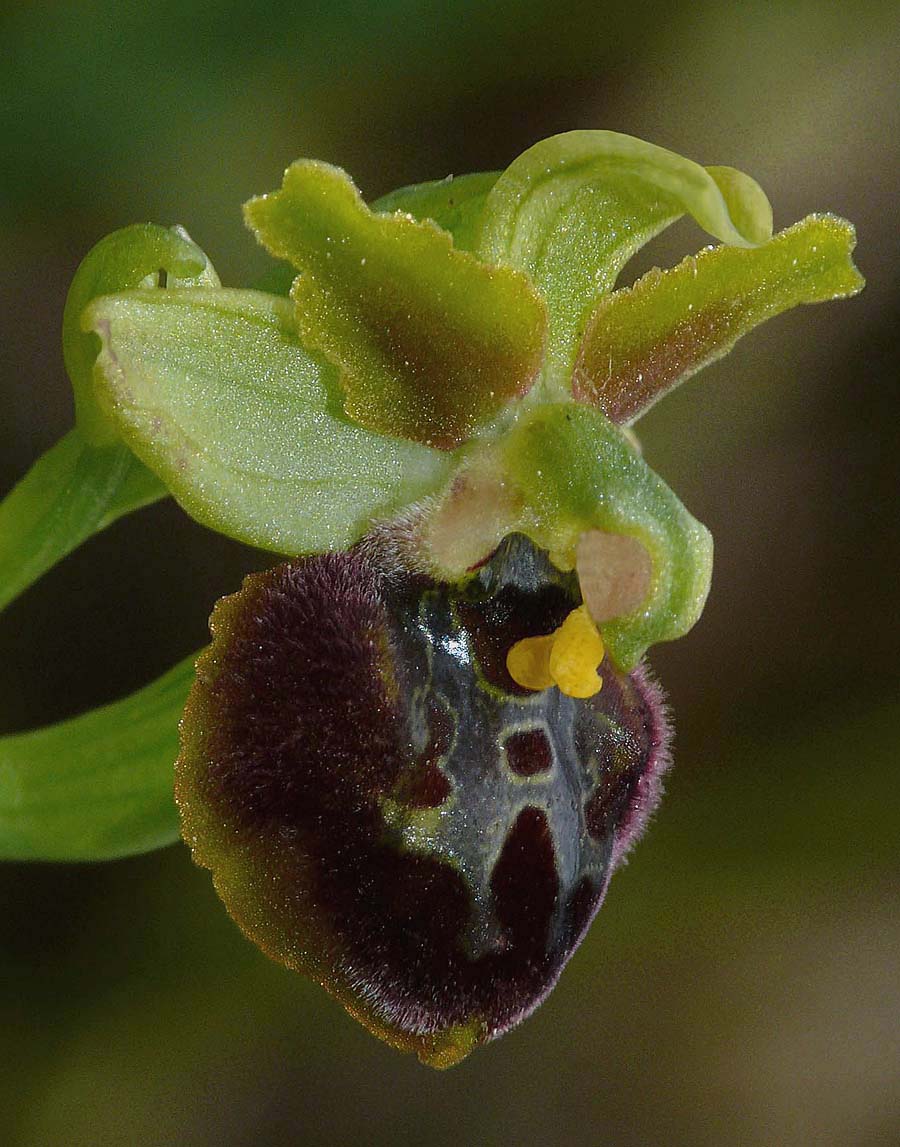
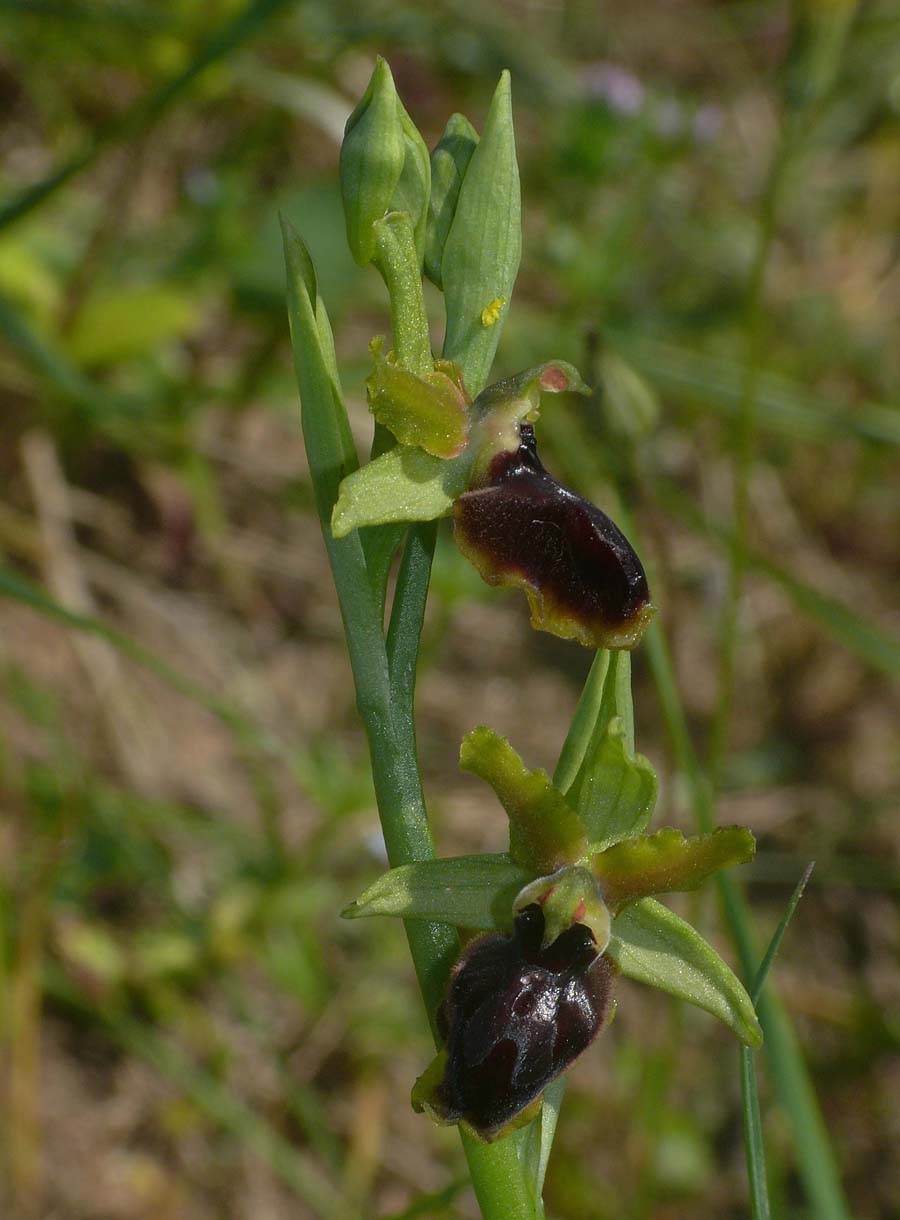
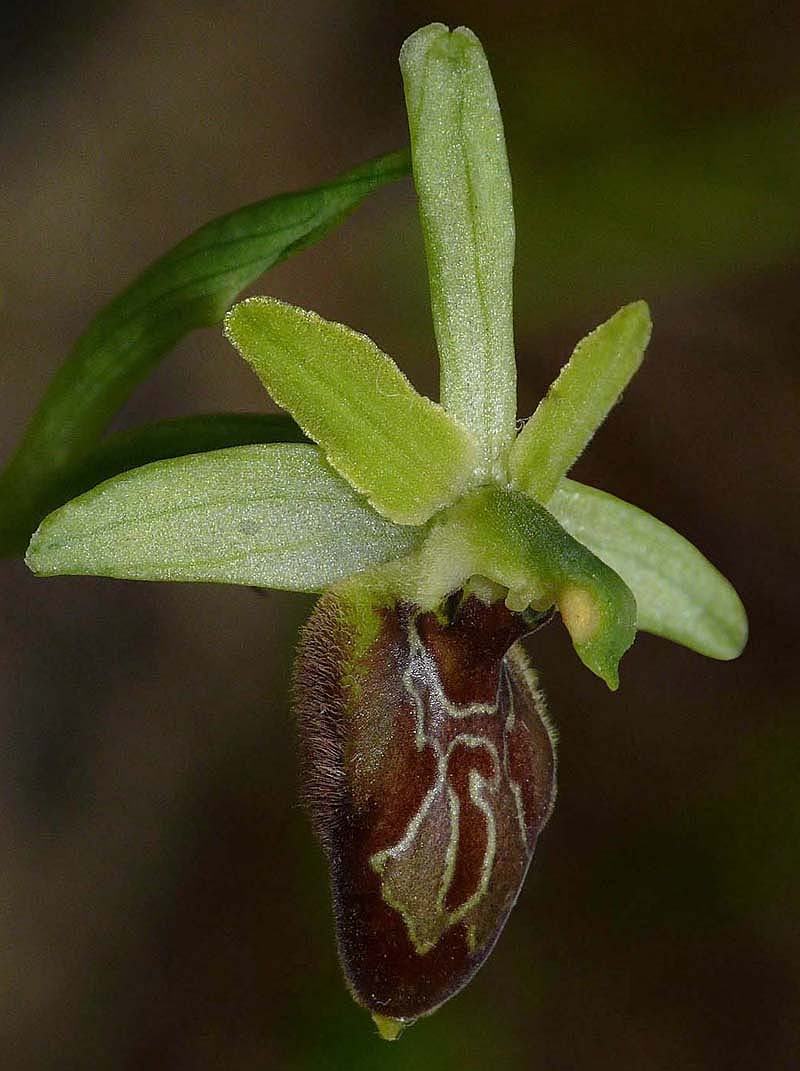
The following photographs depict abnormal examples of O. tarquinia. The first three pictures are from Monte Argentaria and is a semi-hypochromatic specimen.
Amongst the features that indicate the identity of this plant is the
blue-grey basal rosette, the thick stem, overall robust appearance, large flowers and lack of basal swellings.
The final three pictures are from the Siena region of Tuscany and depict examples of O. tarquinia with greatly enlarged and heavily patterned sepals. This phenomena is not particularly rare but creates a remarkable picture.
The final three pictures are from the Siena region of Tuscany and depict examples of O. tarquinia with greatly enlarged and heavily patterned sepals. This phenomena is not particularly rare but creates a remarkable picture.
